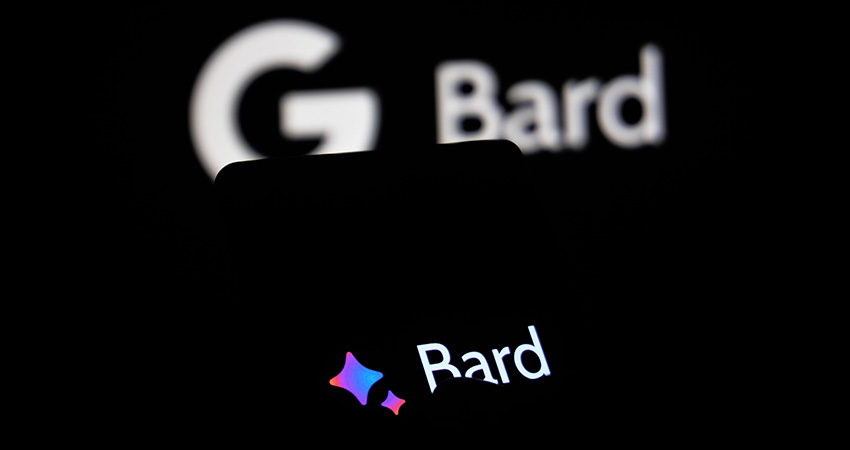How can marketers seize the power of GenAI to engage customers profitably? (credit: Mojahid Mottakin on Unsplash)
The last six months have seen generative AI (GenAI) go mainstream. The ongoing popularity of – and debate over — OpenAI’s ChatGPT has sparked conversations about the potential of Large Language Model-driven systems. Since ChatGPT’s launch, many companies have announced OpenAI integrations or have begun using Google’s Bard or others.
This has dramatically changed the digital marketing landscape, especially in relation to ad targeting, lead generation and search engine optimization. Google has started testing GenAI in search. The tool not only answers initial user queries, but also offers subsequent suggestions and links “while preserving context from question to question,” Google said in a blog post. These AI models can understand and analyze consumer needs, even as expectations change frequently.
Effective customer engagement is crucial to thriving in the current retail landscape, with every customer demanding a personalized experience. It means retailers and ecommerce players must evolve their approach to customer engagement. They must also find new ways to interact with customers and better methods of measuring the impact of those efforts in terms of hard ROI.
As 90% of business leaders expect to utilize GenAI solutions “often” over the next two years, is it really the way forward for marketers to do this?
A Defining Moment for Marketing
Unlike the initial hype surrounding crypto and the metaverse, the storm of GenAI coverage on its capabilities and potential is different. The pace of change in the last six months is there for all to see, with its impact being marked as a new iPhone moment. From conversational text to image creation, its ability to create bespoke, tailored content quickly and uniquely has brought new capabilities that were not even feasible half a year ago.
Being faced with the task of personalizing all your marketing content can seem like a towering proposition. Yet in this context, the days of generalized, broadly personalized marketing are in the past, or should be. GenAI is pushing the boundaries in marketing, utilizing customer behavior patterns and preferences – alongside location, demographic and market information – to categorize audiences and individuals and deliver hyper-personalized content. It stands out in its ability to act in real time, responding to online activity with tailored communication and live product recommendations.
Businesses are then equipped to highlight quality leads, acquire a deep understanding of their target audience and, ultimately, deliver truly authentic experiences for every customer. The latest McKinsey research says the most effective companies are facilitating hyper-personalization and “maximizing their use of ecommerce … through analytics and AI.” But how does GenAI do this?
Going Beyond the Role of “Content Generator”
AI’s time-saving qualities are well-documented, with the same McKinsey research showing that one-fifth of sales team functions could be automated. The amount of time we have in a working day doesn’t change, but through GenAI, how we use that time can change substantially.
GenAI’s content generation qualities are well-known, with tools like ChatGPT acting as a creative catalyst to help overcome writer’s block. But its ability to segment audiences, personalize content and produce actionable data based on likes, preferences and trends can save hours of initial data analysis and content creation time for marketers and data scientists.
This frees up chunks of time for marketing and sales teams to focus on creative development and value-added activities; there’s an art to effectively assessing actionable data and creating campaigns from it. In order to grow, be creative and strategize, you need thinking, brainstorming and collaboration time. GenAI is forging this space for human intelligence, acting as a tool for further innovation, rather than a job replacer.
A Crystal Ball for ROI: Guidance and Predictions
For marketing, this new world of AI integration makes it imperative to have the tools to keep up with the moving goalposts. As consumer habits evolve in line with wider societal trends, it’s essential companies match and even foresee trends. Marketers often spend vast amounts of time trying to predict factors such as customer loyalty, churn and best ways to convert customers who are on the fence.
These factors are not only crucial for forming effective campaign strategies but to also illustrate marketing’s ROI. The technology behind GenAI can offer guidance and predictive analysis, which can be used with human intelligence to outline strategies and content that are working, what could be improved and strategies to pursue. With this approach, you can effectively measure ROI, making it easier to scale operations accordingly, optimize budgets and drive efficiency.
While only six months ago, the entrance of generative AI into the world feels like a defining moment for digital marketing and customer engagement. These tools are delivering new levels of audience insight and personalization, making it harder for marketers to go without them.
Rather than spending hours of valuable time extracting and assessing data, GenAI can provide knowledge, real-time capability and predictive analysis to deliver a highly personalized, engaging experiences. Its responsible integration into marketing can be the “iPhone moment” for customer engagement.
Greg Blazewicz is CEO of SALESmanago

